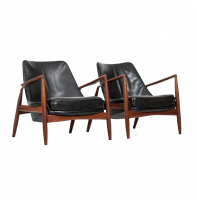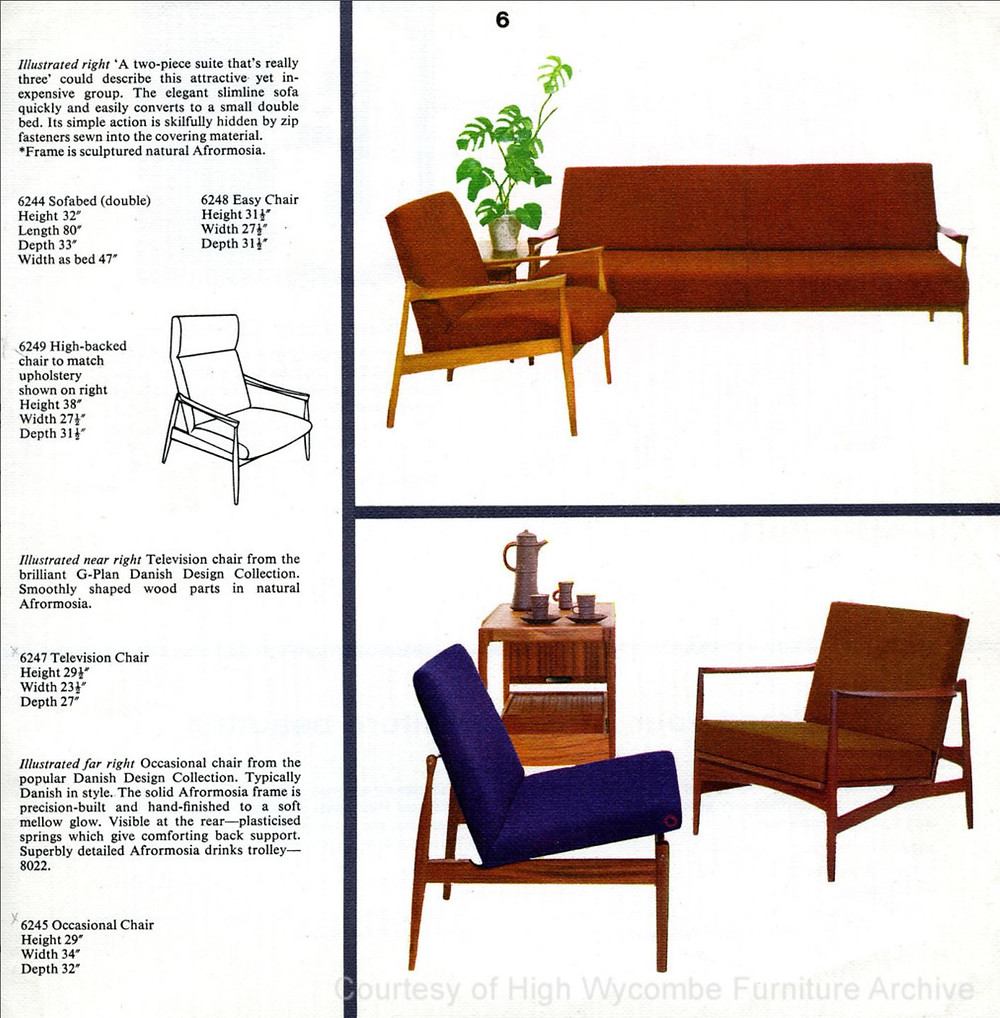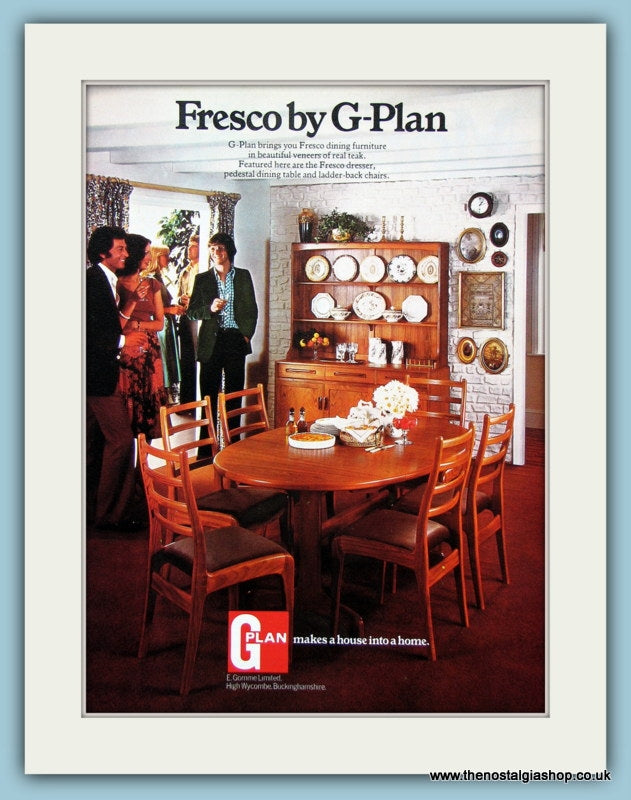G Plan is one of Britain’s most iconic furniture makers of the latter half of the twentieth century. It began as a pioneering a range of furniture, produced by E Gomme Ltd of High Wycombe. (Gomme was the 'G' in G Plan), and is still synonymous with the mid-century style still popular today.
Founded in High Wycombe in 1898 by Ebeneezer Gomme, E Gomme began by making hand-made chairs, making use of the abundant supplies of timber from the Chiltern beech woods local to them, and by 1909 had built a factory on Leigh Street. During the First World War, E Gomme were assigned to manufacturing DC9 aircraft, and by 1922 the company had expanded to 300 employees, opening a second factory in 1927 at Spring Gardens. During World War Two, E Gomme were again involved in the war effort, manufacturing Mosquito aircraft.
The conception of G Plan came about as a response to the years of rationing affecting furniture production and availability. With the end of the second world war came a high demand for furniture, due to bombed out homes, and a shortage of raw materials and timber to satisfy it. The British government’s solution was to introduce the Utility scheme, wherein a limited number of simple designs were made available to factories, and were predominately produced in oak, (and sometimes, mahogany) veneered, plywood. This was just a temporary fix however, and when the scheme ended in December 1952 there was still a huge and unsatisfied demand for more modern furniture, a demand fulled by the Festival of Britain in 1951 showcasing the best of modern design.
In response to this demand, Donald Gomme, a designer at E Gomme, decided to produce a full range of contemporary furniture for the whole house that could be bought piece-meal, and over a number of years, according to each household budget. The name G Plan was coined by Doris Gundry of the J. Walter Thompson advertising agency, and all the furniture showed the now iconic brand mark. G Plan was launched in 1953, with the Brandon Range, designed by Victor Bramwell Wilkins, this simply designed range featured splayed legs, wooden handles, and was produced in light and mid oak. As with many of the ranges that followed, it was available to buy for a long time, finally finishing in 1969. In the years that followed, G Plan introduced many different ranges of furniture, including Chinese White(1956), Tola and Black (1958), Group 3 (1963) and Quadrille (1965).
From the start, Gomme knew that they had to appeal to and reach a mass-market in order his idea to work, employing the advertising agency J. Walter Thompson early on to help them do so. Instead of simply selling through stockists, G Plan advertised directly to public in home and style magazines and cinemas, as well as setting up showrooms throughout the country where the public could actually see, touch and sit on the G Plan range; the 'G Plan Gallery' was established in Vogue House, St George Street, Hanover Square in London.
The G Plan range was so successful, that it led to E Gomme Ltd becoming one of the UK's largest furniture manufacturers, with profits increasing exponentially between 1953 when it was first brought to market and 1958 when the company was floated on the London Stock Exchange. Donald Gomme left the company in 1958, at the peak of the company's success.
By the 1960s, G Plan was facing serious competition from the Danish Modern design movement, with Scandinavian design becoming increasingly popular throughout the UK. In response to this, in 1962 G Plan introduced the Danish Modern range, designed by Danish architect and furniture designer, Ib Kofod-Larsen. This range was well made and more upmarket than their others, but made the rest of their furniture seem dated. G Plan had lost their position as market leaders, but continued to produced innovatively furniture, with a well known brand name.
As the popularity of modern, teak finished, furniture waned in the 1970s, G Plan released some short-lived ranges such as Libretto and Arcadia, both of which were a significant move away from the principles of Scandinavian design, and were veneered in much darker wood, like mahogany or walnut.
In 1987 the Gomme family, still major shareholders in the company, decided to retire and sold the business to the directors, who, three years later sold it themselves, to the Christie Tyler group of companies. From 1996, the Morris Furniture Group owned the license to make and market G Plan Cabinet furniture in Glasgow, but since 2015, G Plan cabinets are no longer in production. G Plan Upholstery Ltd, run separately from G Plan Cabinets, is now based in a factory near Melksham, Wiltshire, and continues to manufacture sofas and armchairs within the UK, including the G Plan Vintage range.
All Restoration







